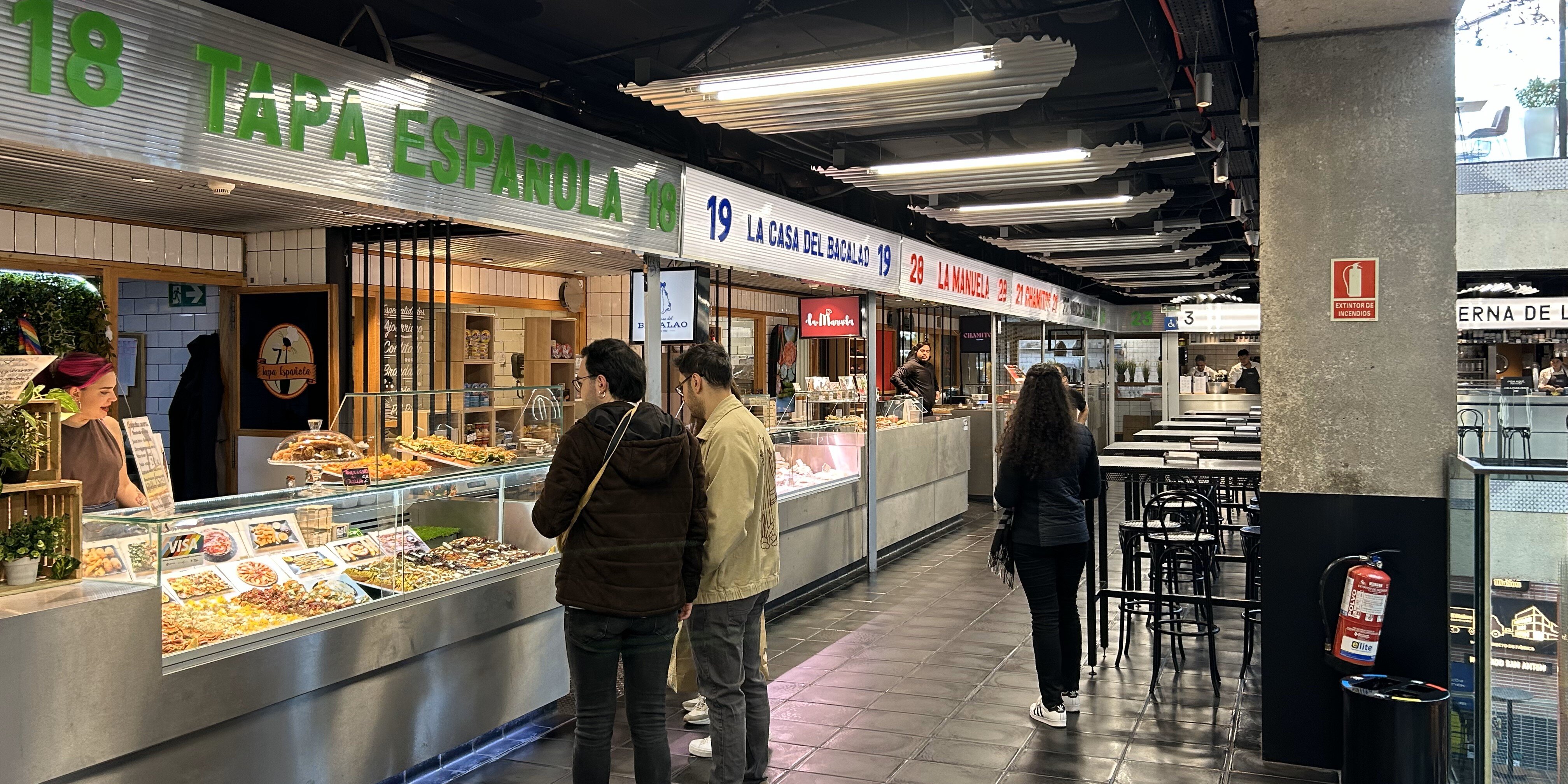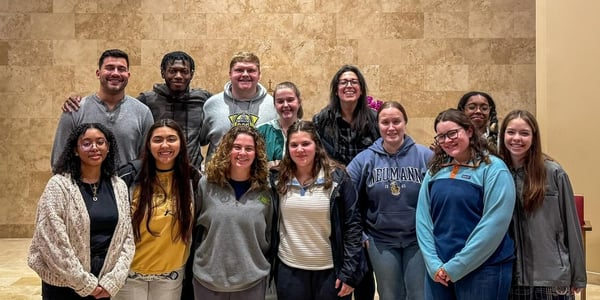Under a cascade of shimmering lights, models worked the runway to showcase different designers’...
Neumann Students Discover the Markets of Madrid

Madrid is a city of markets. Food markets. Flea markets. Markets at every turn.
For Spring Break, while many American college students headed for Daytona Beach, Neumann students of Race, Diversity and Media headed to the capital of Spain, and its markets.
Here is what they found:
Mercado de San Miguel:Similar to the Reading Terminal in Philadelphia, Mercado de San Miguel provides history and taste, both literal and figurative, to the surrounding area. Just a couple-minute walk from Plaza Mayor, Mercado de San Miguel and its metal pillars house foods, of all varieties, that preserve and present Spanish culture.
In this market, one will find shops that produce and sell Spanish delicacies such as aged cheese, churros, empanadas, croquettes, wine, and most importantly, cured Jamon Iberico or Iberian ham, some even freshly carved from the dried aged pig’s leg. Fed only acorns, the pig’s meat has become a sacred meat, and continues to be due to places like Mercado de San Miguel.
It was also in this market that I tried tapas, another Spanish delicacy, for the first time. Tapas are a small-portioned dish usually consisting of bread, cheese, and meats, that date back to the 13th century, when King Alfonso started the popular dish.
Mercado de San Miguel also preserves and lives out the Spanish culture by how it reveals the impression other cultures have had on Spain. Fish and street tacos, sushi, olives, croissants, and mini burgers, are not food items that originated in Spain but have become popular.
El Rastro de Madrid flea market:Every Sunday from 10am until 2pm, tents and tables pop up around the Plaza de Cascorro, stretching half a mile long. In the middle of this market lies a statue honoring Eloy Gonzalo, a heroic Spanish soldier who served in the Cuban War of Independence.
Walking through El Rastro de Madrid, one can purchase items that show Spain’s self-reliance and eclectic tastes: Leather watches and bracelets, leather and cloth bags, Spanish hand fans, wooden items, dream catchers, tapestries, and much more. All these items are handmade and specially designed to express the local culture. Certain stands even sold items, such as magnets and drawings of bulls or flamenco dancers, serving as a symbol of the national culture.
While walking through this market, I used my euros to purchase three distinctly unique items: a black and tan wooden bead bracelet, gold anchor shaped earrings, and Breaking Bad themed socks. (I collect crazy socks so of course, I had to buy a pair!)
Mercado San Anton:Opening in the 1800s, Mercado San Anton is comprised of four floors, all connected by escalators. Stations selling food and groceries make up the first three floors, with the fourth floor solely being a rooftop bar and restaurant.
In this market, one can indulge in tortillas, Iberico jamon kabobs, Spanish pastries, ice cream, Spanish sausages, and more. Accepting the influence from other countries, certain stations within Mercado San Anton also sell ceviche and naan bread. To wash down your meal or snack, one can choose from the drinks originating in Spain, such as Estrella Galicia and certain wines.
Outside of food and drink, there was a station which sells native flowers. Flowers, much like other countries, are preserved and considered a national symbol of Spain.
Mercado San Ildefonso:Comprised of four floors, Mercado San Ildefonso is another market that continues the Spanish culture through its food and drink, both from Spain and from other countries.
As soon as you walk through the door, you will immediately discover the globalization happening in Spain: the first couple stalls sell Asian cuisine. At the end is located a bar that sells four main types of beer, both local and international.
As you ascend to the third floor, you will continue to notice more international stalls mixed in with native cuisine. At these stalls, you can purchase croquettes, tacos, mini pizzas, tortillas, Peruvian dishes, Korean barbeque, and more.
In this market, there are also stalls showing how Spanish culture lives on, intertwined with other cultures. This is primarily shown through a stall that sells crepes with Iberico jamon, tomato sauce, cheese, and spices.
Mercado San Ildefonso also exhibits Spanish culture through the artwork and designs within it. Branching out from the second floor, there is a sitting area showing the uniqueness of Spanish culture, with its tables and walls being painted in bright colors and intricate designs.
If you have been reading carefully, you now know a couple of things. Mercado means market and where to eat and shop when you go to Madrid.






